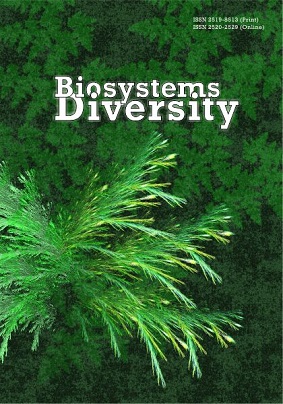Долговременная динамика состояния сообщества обрастания Одесского залива Черного моря
Long-term dynamics of the state of the fouling community in the Odessa Bay (Black Sea)
Author(s): A. Y. VariginSubject(s): Human Ecology, Sociobiology
Published by: Дніпропетровський національний університет імені Олеся Гончара
Keywords: fouling community; species composition; the long-term dynamics; Odessa Bay; Black Sea;
Summary/Abstract: This article examines the long-term dynamics of the qualitative and quantitative characteristics of the coastal fouling community of Odessa Bay (Black Sea) for the last 40 years. It compares the data on this community, obtained by different researchers in 1976, 1994 and 2016 was conducted. The number of species included in the fouling community decreased from 103 (1976) to 43 (1994) and then reached to 62 in 2016. As a possible reason for this reduction in the species composition of the community the influence of large-scale anthropogenic eutrophication, which was already strongly evident in the north-western part of the Black Sea in the 1970s, is proposed. This phenomenon was accompanied by periodic outbreaks of mass abundance of planktonic algae, secondary water pollution, the development of hypoxia and a frequent suffocation effect on the benthos, which caused the disappearance from the community of 41 species of invertebrates. The reduction in the number of species affected representatives of the following taxons: Polychaeta, Amphipoda, Gastropoda and Bivalvia. Currently, the core of the community includes the same species of invertebrates, as in the past. It is based on Bivalvia mussels Mytilus galloprovincialis. Among the attached forms Mytilaster lineatus (Bivalvia) and Amphibalanus improvisus (Cirripedia) play a leading role, and among mobile – representatives of Polychaeta, Isopoda, Amphipoda and Gastropoda. It is shown that 10 of the 25 species, recorded the first time for this community in the 1970s, have become abundant in modern conditions. The primacy in the relative density in the composition of the community at the present time has passed from the amphipod crustaceans to bivalve molluscs. The highest relative biomass, both in the past and in the present-day conditions was observed in representatives of Bivalvia. The structure of the resistance of the fouling community to the effects of unstable environmental factors specific to the coastal zone is discussed. Overall, it was found that those species which have been preserved in the community are habitat generalist invertebrates, which are well adapted to the sharp fluctuations in temperature and salinity of sea water, as well as to periodic storm impact.
Journal: Biosystems Diversity
- Issue Year: 25/2017
- Issue No: 2
- Page Range: 61-66
- Page Count: 6
- Language: Russian

